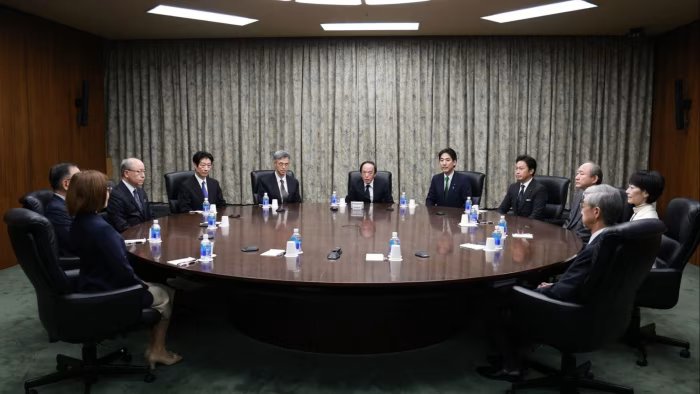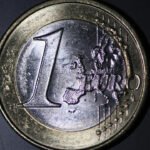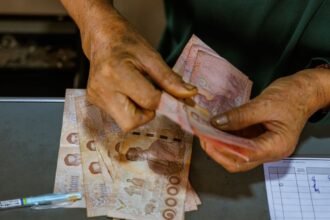Unlock the Editor’s Digest for free
Roula Khalaf, Editor of the FT, selects her favourite stories in this weekly newsletter.
The Bank of Japan has kept interest rates unchanged, sending the yen sharply lower against the US dollar on speculation that the central bank may not risk any further rate moves this year.
The central bank’s Monetary Policy Committee on Thursday kept rates at about 0.5 per cent, in line with expectations and the second consecutive month that its members were split 7-2.
At a press conference later on Thursday, BoJ governor Kazuo Ueda said he had “no preconceived views on the necessity or timing” of an increase in rates.
“At present, we do not recognise any elevated concern that we are falling behind the curve,” he said. “The Bank of Japan will continue to assess and confirm the accuracy and risks of its central outlook for the economy and prices . . . [and] will make appropriate policy decisions at each policy meeting.”
Although the rates decision was widely expected, analysts warned that Ueda’s cautious tone could renew downward pressure on the yen.
The Japanese currency weakened 0.6 per cent against the dollar to ¥153.12 before later falling to an eight-month low.
“The BoJ stuck in gear through year-end means the yen will again become the pressure release valve for the market, with the risk of reaching fresh lows,” said Benjamin Shatil, senior Japan economist at JPMorgan.
He added that Ueda’s comments appeared to raise the risk that the next rate rise would not come until early 2026.
The Nikkei 225 stock index also saw volatile trading, jumping as much as 0.6 per cent to an all-time high of 51,654 before erasing gains, and then rallying again into the close.
The benchmark index has risen more than 14 per cent in the past month. Neil Newman, Japan strategist at Astris Advisory, raised his target for the index to reach 66,500 by the end of next year, but he warned that the BoJ’s hesitation “might hamper the next stage of the rally”.
The BoJ’s decision came nine days after the inauguration as prime minister of Sanae Takaichi, who in the past has criticised the central bank’s rate rises despite pledging to fight rising prices.
The BoJ also released its latest economic outlook, which predicted modest growth and warned of the uncertainty around the state of the global economy in the face of shifting trade policies.
Critically, the statement forecast annual inflation excluding fresh food prices was likely to decelerate to below the bank’s 2 per cent target through the first half of the 2026 fiscal year. High rice prices, which have helped push up the consumer price index for much of the past year, are now expected to moderate.
“Meanwhile, underlying CPI inflation is likely to be sluggish, mainly affected by the growth pace of the economy,” the BoJ said.
Shoki Omori, chief desk strategist at Mizuho, suggested the BoJ could raise rates at its December policy meeting, particularly because of growing pressure from US Treasury secretary Scott Bessent, in order “to take care of the US-Japan relationship”.
Bessent on Wednesday, at the conclusion of a three-day visit to Japan, wrote on social media that Takaichi’s administration should grant the BoJ “policy space” to fight inflation. In August, he suggested that the Japanese central bank was “behind the curve”.
Ueda declined to comment on Bessent’s remarks.
Stefan Angrick, senior economist at Moody’s Analytics, said the depreciation of the yen was at odds with policy developments in Japan and abroad.
“A new government announcing greater capex spending usually boosts growth and strengthens the currency,” he said. “The yen has become increasingly untethered from economic fundamentals.”





















